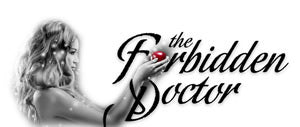The Nutritional Differences Between Baby Formula and Breast Milk: Why Breast Is Still Best

When it comes to infant nutrition, the debate often centers around baby formula versus breast milk. Both serve as primary food sources for infants, yet they differ significantly in composition, adaptability, and health benefits. Dr. Jack Stockwell dives into the profound differences, highlighting why breast milk is uniquely suited for newborns and why formula, although a useful alternative, can't replicate nature's precision.
Breast Milk: Nature's Dynamic Formula
Breast milk is a living fluid, constantly adapting to meet the changing needs of an infant. Unlike formula, which maintains a consistent composition, breast milk adjusts its nutrient levels based on the baby’s developmental stage, current health, and even the mother’s diet. This means that a newborn receives different nutrients from breast milk than a four-month-old, providing the perfect blend of nutrients for each stage of growth.
The first milk a mother produces, known as colostrum, is a nutrient-dense fluid packed with antibodies that protect the baby’s developing digestive tract. Colostrum helps seal the newborn’s intestinal lining, which prevents harmful substances from entering the bloodstream. Formula, in contrast, does not contain colostrum or the beneficial antibodies and enzymes present in breast milk.
Formula vs. Breast Milk: Key Nutritional Differences
One standout difference is in fat content. Breast milk provides essential fats, including omega-3s like DHA, that are crucial for brain development. Formula often lacks DHA and other vital fats in sufficient quantities. Moreover, breast milk naturally contains cholesterol, a critical nutrient for brain development, which is absent in most commercial formulas.
Additionally, breast milk includes enzymes like lipase, which help infants digest fats efficiently. Formula lacks these enzymes, which can result in slower nutrient absorption and the production of undigested waste, contributing to the distinctive smell of formula-fed babies' stools.
The Role of Proteins and Immune-Boosting Components
The protein in breast milk is soft and easily digestible, while formula contains harder-to-digest proteins that can strain a baby’s kidneys. Furthermore, breast milk delivers specific immune molecules that pass from mother to child, enhancing the infant's immune defenses against common infections. Formula lacks live white blood cells and other immune factors, limiting its protective benefits.
Bioavailability: Why Breast Milk Nutrients Are More Effective
Dr. Stockwell emphasizes bioavailability—the extent to which nutrients can be absorbed by the body. Vitamins and minerals in breast milk are readily absorbed, while synthetic nutrients in formula often pass through the digestive system unutilized. For example, iron from breast milk is absorbed at a rate of up to 75%, while iron from formula may only reach an absorption rate of 10%.
When Breastfeeding Isn’t an Option
For mothers who can’t breastfeed, donor breast milk is a viable option, although pasteurization can reduce some of the milk’s beneficial properties. Homemade formulas, which can be customized with nutrient-rich ingredients, may offer better alternatives than some commercial products.
Breast milk is not just a food; it’s a dynamic, protective, and personalized form of nutrition that adapts to meet the needs of growing infants. Formula can provide sustenance, but it cannot match the complex, living composition of breast milk. For those able to breastfeed, it remains the gold standard of infant nutrition, setting a foundation for a lifetime of health.
